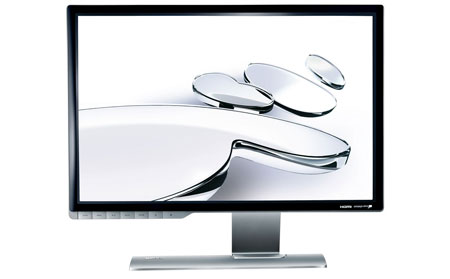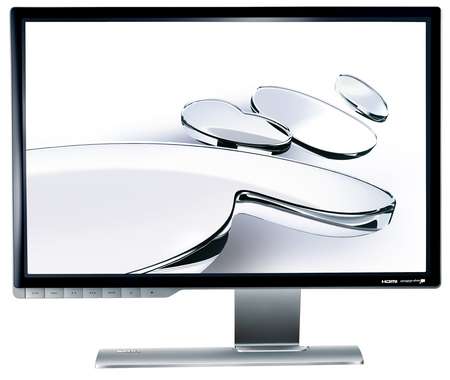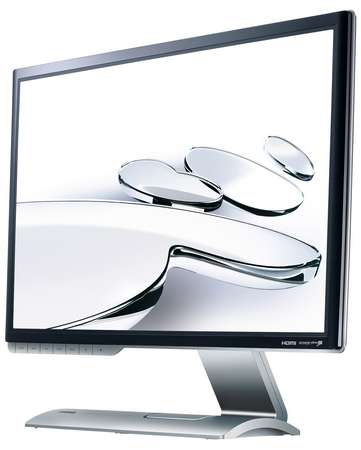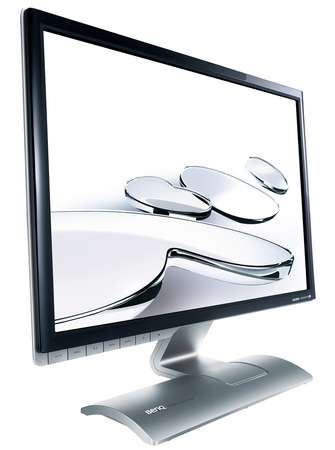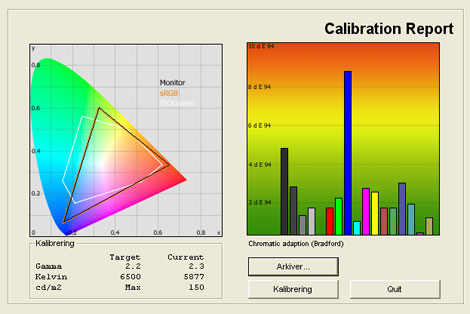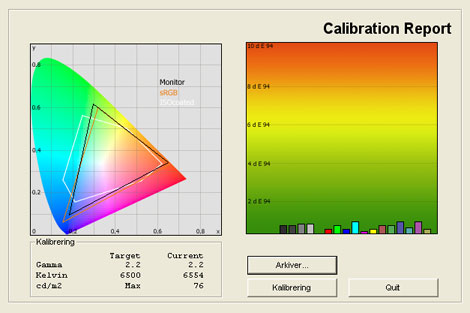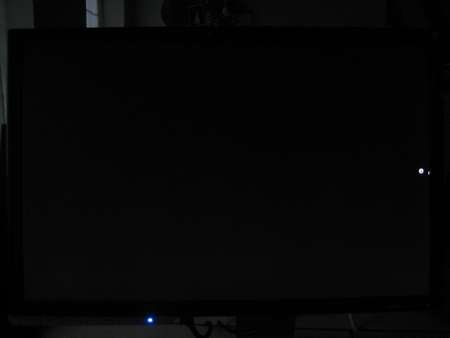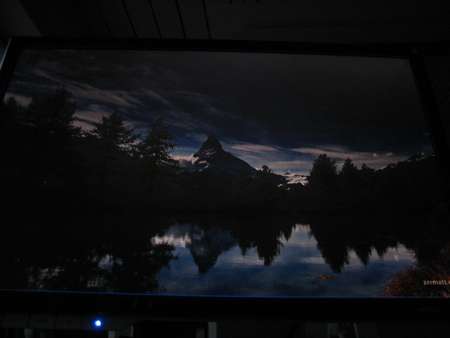Review: BenQ V2400W
Introduction
This review has been translated from Danish and contains the introduction, measurements, pictures and a conclusion. Some sections have been excluded from the translation, however. Future reviews will be fully translated.
BenQ has introduced a new 24-inch model and with its asynchronous design it already has attracted attention. The model is the V2400W and BenQ aims to please the gamers that need rapid response time.
The V2400W also feature a HDMI input for newer graphics cards, gaming consoles or Blu-Ray players.
Panel size 24" Resolution: 1920x1200 Response time: 2 ms (g2g) Overdrive: Contrast ratio: 1000:1 Brightness: 250 cd/m˛ Colour support: Up to 16.2 million colours Colour spectre: 72 % of NTSC Signal processing: 6 bit for each colour Viewing angles (H/V): 170°/170° (contrast 10:1) Dot pitch: 0.27 mm Panel (type): TN (AUO) Power consumption: 55 W Wall mounting: Dimensions (HxWxD): 56.4cm x 36.9cm x 19.2cm (with stand) Weight: 6,7 kg Ergonomics
Tilt Swivel Height Pivot Loudspeakers: Inputs VGA DVI Audio (type) SCART S-video Composite Component HDMI Guarantee: - Pixel guarantee: - Etc:
Price and retailer:
Our first impressions
The V2400W is built on the Kinergy Design by BenQ. The most remarkable detail is the asynchronous design of the stand. It creates a different, but interesting expression and it's always nice to see new fresh ideas. Unfortunately the stand is too much “plastic” and too little quality. An aluminum alloy would have smartened up the looks.
The frame of the monitor is glossy black plastics and in the bottom left side a small gray bar with buttons is located.
V2400W does not offer extensive ergonomic options, but it is possible to tilt the frame.
The buttons are located on the frame’s left side. They touch-sensitive and react accurately.
The OSD (on screen menu) offer these options: brightness, contrast, RGB (red, green blue) and sharpness.
The monitor also has a few different colour profiles called: Standard, Movie, Dynamics, Photo and sRGB.Test tools
We use the DVI input for testing. The graphic card is Geforce 7900GTO.
The monitor has been measured and calibrated with a LaCie Blue Eye Pro. We also examine the monitor with the help of our monitorTest. And finally we test the monitor in games, movies etc.Picture quality
This section has been abridged because of our translation. The graphs, pictures and tables have been kept in order to show the results from our tests. After this section you can find the conclusion which has been fully translated and extended.
Out-of-box picture parameters:
The graph says:
The number on the left is the delta value. Delta is a difference between two factors, here it’s the difference between the measured colour on the panel and the actual colour that we want; the target colour.A delta value lower than 2 results in a visible deviation from the actual colour. A delta value over 4 or 5 results in wrong colours. A delta value between 1 and 2 results in precise but not perfect colours. A delta value lower than one results in almost perfect colours. The target is 0. Everything between 0 and 1 is barely visible to the human eye.
I calibrated the display with our hardware and found that these settings improve the picture quality.
After Calibration Brightness: 60 tr> Contrast: 50 Sharpness: 3 RGB: Manual • R: 91 • G: 84 • B: 78
We have measured contrast; the ratio between brightness and the black levels: NB: This is the static contrast and no dynamic contrast has been measured.
| Out-of-Box | After calibration | |
| Blacks | 0,22 cd/m2 | 0,17 cd/m2 |
| Brightness | 150 cd/m2 | 76 cd/m2 |
| Contrast ratio | 682:1 | 447:1 |
Contrast ratio: +/- 50
We have also examined the homogeneity of the panel. You can see from the picture below (click to enlarge) that the homogeneity is fine. No problems.
Here you see the viewing angels:
And from the bottom:
Conclusion
BenQ V2400W has a TN panel but despite this fact it offers fair picture quality. The colours are not 100 % accurate but neither are they way off. The panel has relatively deep blacks and the picture is not heavily overboosted, which is a plus in my book.
The panel, however, has some problem with viewing angles. Also, the AMA system is integrated to help improve response time but the Overdrive circuit inflicts obvious white trailing (halos). You can turn off the AMA system to get rid of the halo effect but this also means that response times goes up. It is preferable to the white halo trailing, though. So with AMA on you get white trailing, with AMA of you get a slower panel.
V2400W also allows you to connect for example a Blu-Ray player or gaming console to the HDMI input. V2400W is on the contrary not suited for graphics works purposes. For graphics works I recommend displays with the more expensive S-PVA or S-IPS panels.
Nevertheless, the V2400W has a lot of positive picture characteristics and is suitable for playing most games, watching movies; in other words entertainment. It’s just not one of the fastest panels out there.
| Pros | Cons | Target group |
| Accurate colours | Viewing angles | Games and movies |
| Relatively deep blacks | AMA induce white trailing (halos) | Office/Allround |
| HDMI | Gaming consoles |
Price and retailer:

---
For questions and comments please visits this thread in our forums: http://www.flatpanelshd.com/flatforums/viewtopic.php?f=5&t=18

